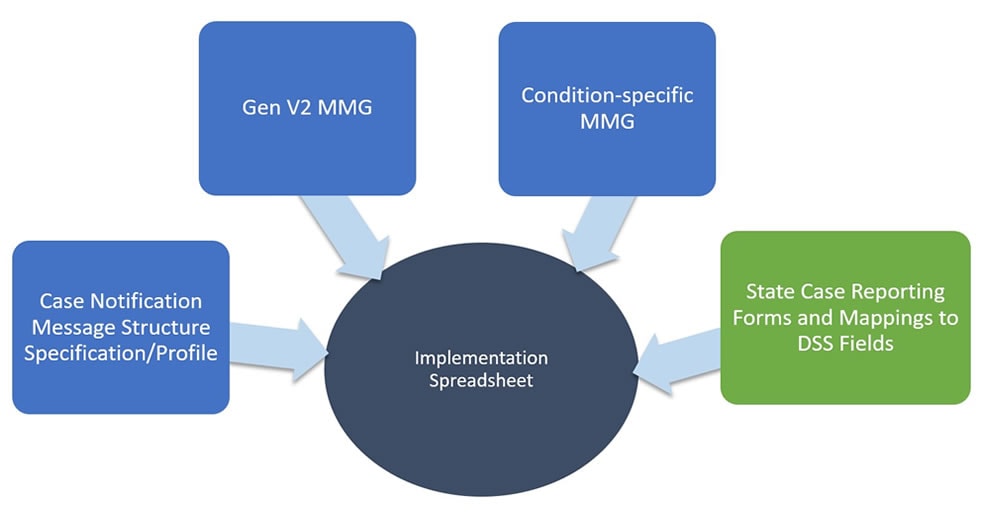Conduct Gap Analysis
During the gap analysis, the PHA compares MMG data elements (required, preferred, and optional) against the information contained in the PHA’s surveillance system and identifies the data elements needed to populate MMG fields, including:
- existing data elements,
- data elements that may be derived from script and logic creation, and
- data elements that may need to be created or added to the PHA surveillance system. (Note: Required data elements noted in the MMG must be sent as part of the HL7 case notification message. If a required data element is not present in the PHA surveillance system, it will need to be added prior to onboarding.)
The PHA may need to apply surveillance system changes to populate MMG required fields; MMG preferred and optional fields are populated if data are available.
The PHA should use the NNDSS Implementation Spreadsheet (visit specific MMG page to access) to help facilitate gap analysis. As the figure below demonstrates, this template merges information from the MMGs, NMI HL7 Message Specification, and the PHIN Vocabulary Access and Distribution System (PHINVADS).

Sources for the National Notifiable Diseases Surveillance System Modernization Initiative Implementation Spreadsheet